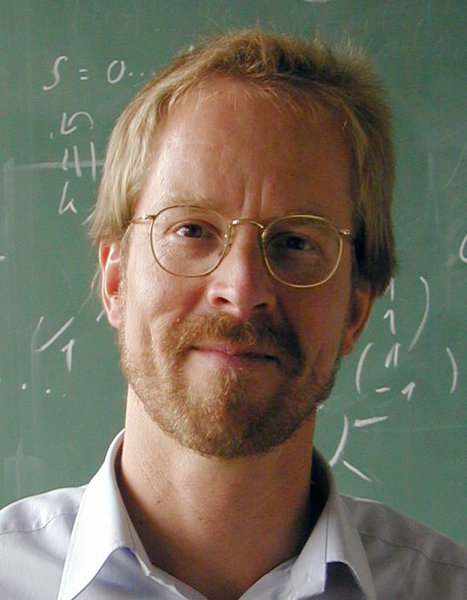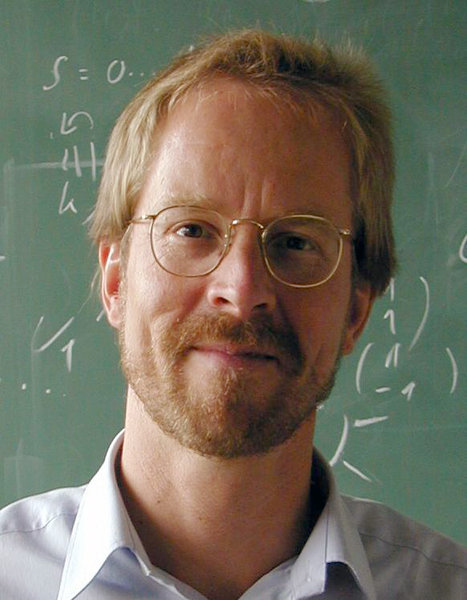Walter Metzner wins 2006 Europhysics Prize
Four scientists honoured with the 2006 Europhysics Prize for developing and applying "dynamical mean-field theory"
The European Physical Society gave out its 2006 Europhysics Prize on March 29 at its yearly meeting in Dresden. The winners are: Walter Metzner of the Max Planck Institute for Solid State Research in Stuttgart, Antoine Georges of the École Polytechnique in Palaiseau, France, Gabriel Kotliar at Rutgers University, New Jersey, and Dieter Vollhardt of the University of Augsburg. The prize comes with an award of 51,000 Swiss Francs. It is backed by the measurement company Agilent Technologies and honours outstanding achievement in condensed matter physics (solids and liquids). The four physicists were recognised for developing and applying dynamical mean-field theory, which allows scientists to explain and compute unusual properties of materials with "correlated electrons". The Europhysics Prize is one of the most important European physics awards - eight of its winners have gone on later to take the Nobel Prize.

Materials research and development is closely tied to technical advancement in general. Not only experimental research plays a central role, but also computing material properties. Without a theoretical understanding of the complex processes in solids, materials scientists quickly get lost in the maze of practically unlimited possibilities of chemical combinations.
The physical principles have long been known that underlie the diversity of materials and their characteristics. Solving the quantum mechanical equations that come along with them, however, is extremely difficult. Even small samples contain a huge number of interacting particles. Electrons, for example, repel each other because of Coulomb interactions. Because it is impossible to calculate exactly the movement of individual particles, physicists draw on statistical methods and approximations.
A well-known and often very successful method involves thinking of electrons not as interacting individually with each other, but rather with a kind of "sea" which is formed by averaging over the positions of all electrons. This model, however, ignores what are called "electronic correlations", like the flexible dynamic avoidance of spatial encounters between electrons. These correlations play a central role in many modern materials with interesting and technologically applicable qualities. Key examples of such materials are high-temperature superconductors and compounds with spectacular magnetic capabilities which can be useful for magnetic storage.
The 2006 Europhysics Prize winners have, over the last two decades, developed a new method of calculating materials properties. It involves treating the local - intra-atomic - correlations of important valence electrons in solids exactly. In this "dynamical mean-field theory", scientists take into account the dynamics of correlations inside atoms and approximately determine how electrons are influenced by neighbouring atoms using an averaged effective field (mean field). Intra-atomic electronic correlations are usually the strongest interactions in a material, and are important for magnetism, metal-isolator transitions, and high-temperature superconductivity.
Dynamical mean-field theory originated with an unusual idea - maybe even an esoteric one, on first view. In 1989, in the journal Physical Review Letters, Walter Metzner and Dieter Vollhardt published a paper showing that local electronic correlations remain the same in hypothetical systems with infinitely many spatial dimensions (instead of the usual three). In this limit, calculating correlation effects is made easier because of drastically simpler equations of motion. In a few simple model calculations, the scientists demonstrated that physical properties in three-dimensional systems can be reproduced with astounding accuracy in infinitely-dimensional analogues. This becomes somewhat easier to understand when one considers that the coordination number - that is, the number of immediate neighbours of an atom - is between 6 and 12 in three dimensional systems, depending on the crystal structure. This number is not so far from infinity in a certain sense.
Other researchers quickly latched onto Walter Metzner and Dieter Vollhardt’s work and developed it further. Particularly important early contributions came from Erwin Müller-Hartmann at the University of Cologne. Antoine Georges and Gabriel Kotliar published a 1992 paper which presented an elegant relationship between the system of interacting electrons in the limit of high spatial dimensions and what are called quantum impurity models. In them, the electrons only interact inside an individual atom. The scientists thus formulated dynamical mean-field theory in a form which turned out to be particularly suitable for physical interpretations and concrete calculations.
Dynamical mean-field theory has since become a standard method worldwide, inseparable from modern materials research. It has applications from investigating fundamental questions of solid-state physics to calculating specific material properties. In the last few years scientists have begun to expand the theory by incorporating inter-atomic correlations between electrons. First applications seem promising of extended dynamical mean-field methods to high-temperature superconductors, which are particularly difficult to tackle theoretically.
Prof. Walter Metzner is a Director at the Max Planck Institute for Solid State Research in Stuttgart. After studying mathematics and physics at the Munich University of Technology, he received a scholarship from the German National Academic Foundation. He earned his doctorate in 1989 from the Technical University in Aachen. After spending several years as a postdoc in Rome and Princeton he habilitated back in Aachen in 1995. Between 1996 and 1998 he was a Professor at the University of Munich and from 1998 to 2001 at the Technical University in Aachen. In 2001 Metzner became a Director at the Max Planck Institute for Solid State Research. He had already received the Friedrich Wilhelm Prize of the Technical University in Aachen, the Physics Prize of the Academy of Sciences in Göttingen and the Gustav Hertz Prize of the German Physical Society. Walter Metzner was born in Munich in 1961.
